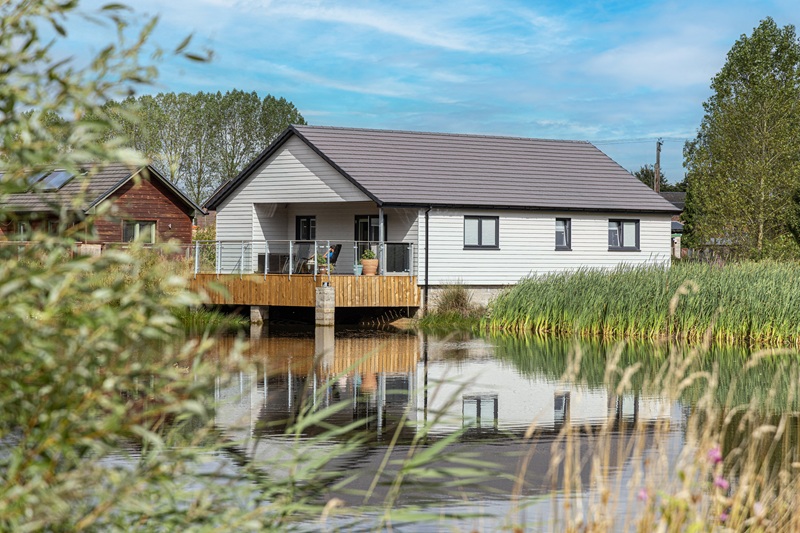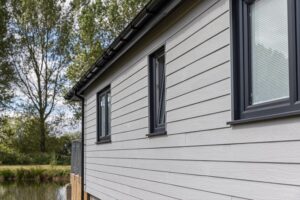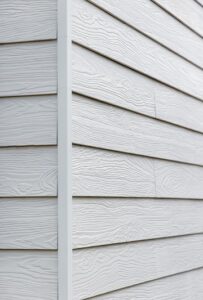
Phillip Wallis, Technical Manager at Marley explains what to consider when specifying and installing fibre cement cladding
Fibre cement cladding has become a go-to solution for homeowners and builders alike, due to its durability, visual appeal and cost-effectiveness. When combined with suitable insulation, it can also significantly improve a property’s thermal efficiency, reducing its energy consumption and offering potential cost savings for homeowners.
Selecting the right product
With a variety of fibre cement cladding options available, it’s important that housebuilders select a solution that meets stringent performance and safety standards. This will ensure that the final product not only looks good, but that it’s also able to the test of time for years to come – whether that’s as part of a new build project or an existing home’s renovation, for example.
Offering housebuilders complete peace of mind, Marley’s Weatherboard range is certified by UL Solutions, a global leader in applied safety science. This certification gives robust assurance that the product has undergone rigorous, independent testing to verify its quality, performance and safety, against a number of factors, including water resistance, wind durability. In addition, the Marley weatherboard has a reaction to fire performance classification: A2-s1, d0, to help meet the necessary regulatory compliance.
Achieving a seamless installation
When chosen, installing fibre cement Weatherboard cladding over existing brickwork is a relatively straightforward process – providing that the property’s underlying structure is strong and secure.
- Prepare the surface: first, ensure the existing brickwork is clean, dry and free from any loose debris.
- Incorporate a vapour-permeable membrane: during the construction of the support structure, the installation of a vapour permeable membrane will protect brickwork and assist in moisture control moisture and ventilation behind the boards.
- Fix the battens: then, fix battens to the pre-existing brickwork to create a framework for the cladding and provide a ventilation cavity. A structural engineer will be able to design the connections between the cladding support battens and the masonry wall to ensure they can withstand the anticipated design loads and wind action. Support battens must have a minimum dimension of 38x50mm, while battens used for butt joints and corners should be at least 38x75mm. Battens should be spaced no more than 600mm apart, measured from the centre of the board, and can be reduced to a spacing of 400mm in areas exposed to high winds.
- Attach fibre cement boards: Once the appropriate corner and edge profiles are installed, the boards can be securely fixed to the battens. Following the manufacturer’s guidelines, the boards can be trimmed to size using a hand saw, circular saw, or jigsaw equipped with a carbide blade designed for fibre cement. They can then be fastened using screws or nails fixed by hand or a pneumatic gun. The Marley Weatherboard system also features a selection of colour-matched trims to provide an aesthetically pleasing finish.

Fibre cladding performance
Fibre cement cladding is inherently low maintenance, but providing homeowners with simple maintenance tips can help to preserve its appearance for years to come. After install, housebuilders can share these simple tips with customers:
- Cleaning – if required, wash the cladding with a mild detergent and water solution, using a soft brush or cloth, and then rinse thoroughly with water and allow to dry.
- Stain removal – for stubborn stains, soak the affected area for a few minutes, then repeat the cleaning process.

- Avoid high pressure cleaners – as the force from these can strip any paint or damage the cladding.
When carrying out any ad hoc or routine maintenance on fibre cement cladding, builders should ensure they check the entire façade, as well as:
- Inspect ventilation gaps, joints and fixtures – looking for any signs of damage. If any issues are identified, they should be addressed promptly to maintain the façade’s structural integrity.
- Check for efflorescence – a natural white residue caused by salts surfacing through moisture. If present, this may indicate water intrusion or blocked ventilation paths.
- General condition of the cladding – including checking for damaged or loose boards that need to be either resecured or replaced. Pay particular attention to high-risk areas, such as corners and edges, which are generally more susceptible to wear and tear.
Reliability and style
Marley’s Weatherboard fibre cement cladding range offers a winning combination of aesthetic appeal and robust performance. By following these simple steps, professional builders can ensure customers’ external cladding continues to look good and perform well for years to come.
For more information on Marley fibre cement cladding click here







